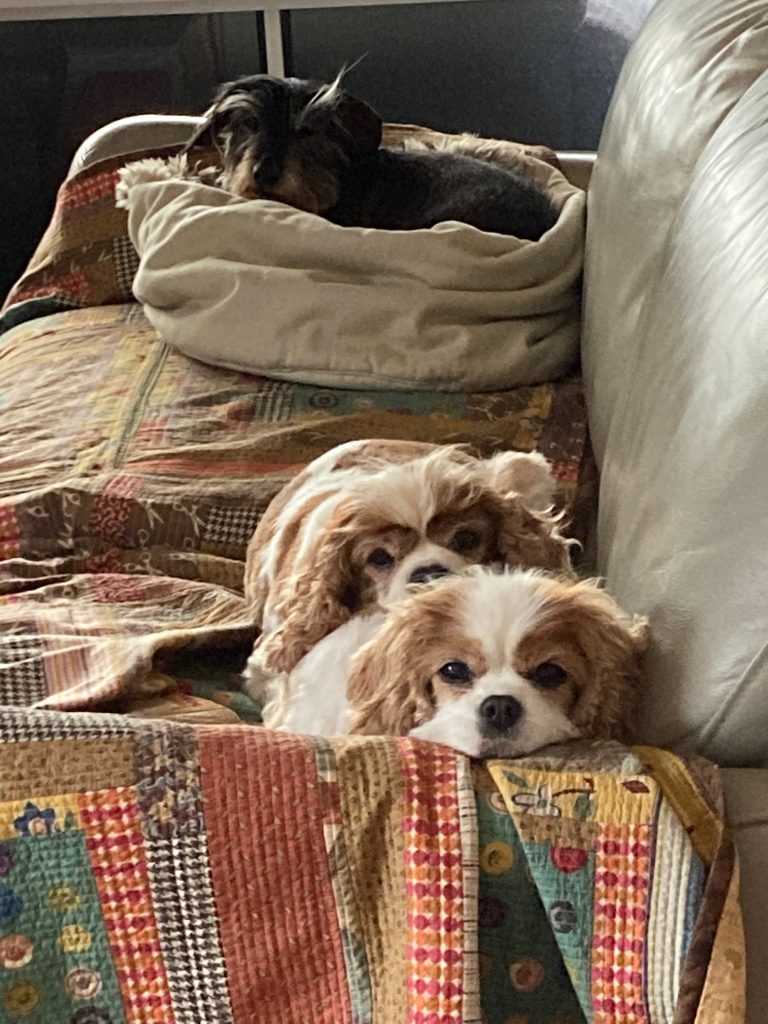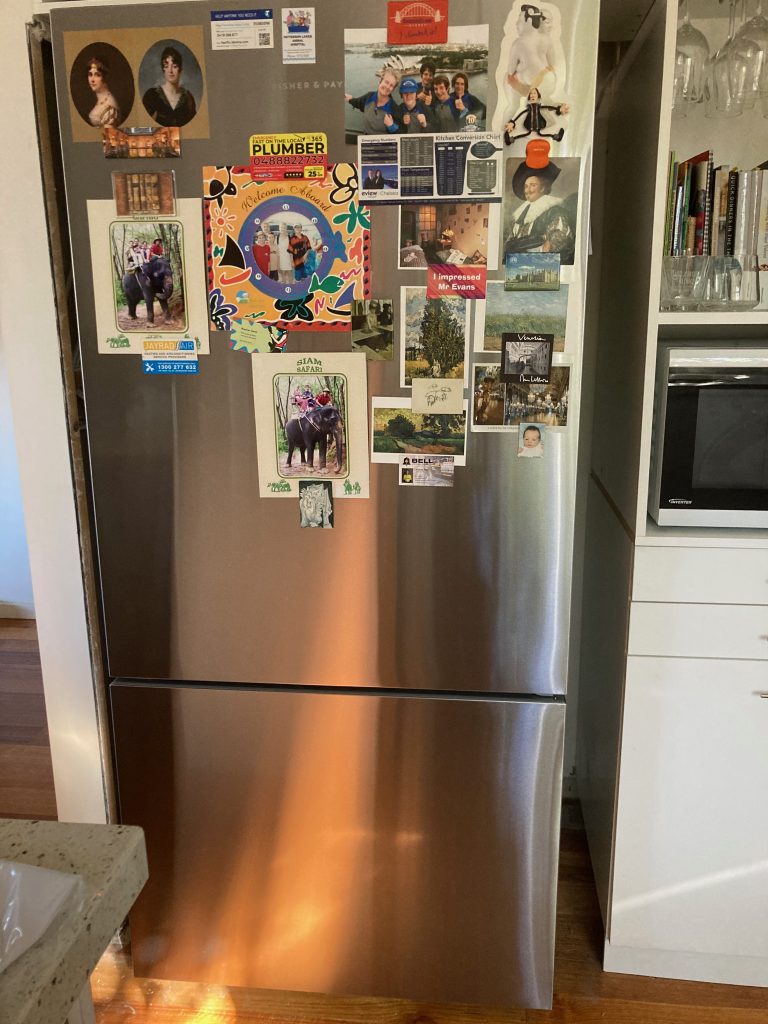
I first learned the value of having what I then called a ‘Buffer Zone’ back in the days when I was newly separated, with 4 small boys under 6. When we split, we had a mortgage, 2 old cars and $120 in the bank. I withdrew the money and gave him half, so we each had $60. I took the people mover and he took the van he needed for work. We agreed that the boys and I would live in the house and in lieu of child support, he’d pay the mortgage.
(Anyone who’s ever been in this situation, or knows people who have, knows what’s coming next. It’s the classic move of the non-custodial who wants to punish their ex.)
Establishing a new life with $60 and 4 kids isn’t as much fun as you might think. We were able to get the Sole Parent’s Pension, as it was called then, so basic bills were covered. But I had a huge urge to get some security for us and so I decided to scrape together one thousand dollars as a ‘Buffer Zone’ for us.
It took 4 or 5 months but I did it. I scrimped and scraped, I barely ate any meat during this period – though I remember cutting off the end of a sausage that the boys were having as part of their spaghetti and ‘meatballs’ meal and devouring it. Any way that I could save money, or at the very least wring every cent’s worth of value from each dollar, I did.
And yes – one day I checked the bank account and there was $1,000 sitting there.
I breathed a sigh of relief. We had our Buffer Zone. Job done!
But something was niggling me. A few days later, I decided to call the bank and check on the balance of our mortgage.
I felt like someone had pulled the rug out from under me. The person on the other end of the line told me that the mortgage hadn’t been paid for a couple of months and that the account was $963 in arrears.
“After another month, we would’ve called to discuss it.” But of course, I wouldn’t have been the one they would’ve called. This was 25 years ago – the male name on the mortgage would’ve received the call. I was lucky that I decided to check.
But of course, I didn’t feel lucky at the time. As I threw the younger kids into the massive double stroller I had and began to walk up the street towards the bank with the older two boys skipping along beside me, I was furious. Actually, I felt incandescent with rage.
But I also felt thankful that I had the money behind me to fix it. A simple transfer from my Buffer Zone account to the mortgage and the situation was safe.
And that’s what a Buffer Zone/Emergency Account is for.
To save your bacon in the event of an unexpected expense.

Naturally, I immediately began work on building that Buffer Zone back up. It was even harder this time because I was now paying the mortgage on top of everything else. But like everything else on this FI/RE trip, if you keep at it step by step, you eventually get there.
Would I ever be without an Emergency Fund again? Hell, no! That thing not only kept a roof over our heads when we were at our most vulnerable, but every now and then over the years it’s smoothed the ride when surprising things happened.
What about the day I loaded the boys into the Tarago and swung the roller door closed, only to have it keep on going and the bottom half swung off the car? Ok, I admit that it was stressful trying to secure the door well enough so we could drive home safely, but the next day, thanks to the emergency fund, I was able to get it fixed.
(When it happened, the boys stared at me in shock as the door was swinging wildly from one hinge. I remember thinking, “I can either laugh or cry.” With those little boys looking at me, all I could do was start laughing. The situation was so awful as to be hilarious. )
The time that Scout swallowed a seed pod and almost died was another one. Her surgery cost $3,200. I was telling that to a friend at work and she gasped and said, “I’d never be able to afford that. The vet and I would have been having a very different discussion.” Fortunately, I have a separate emergency fund for the dogs, so money wasn’t an issue. Three years later, we still have our little girl who makes us laugh every single day.
A couple of years ago I leapt blithely into my morning shower – only to leap straight back out, screaming. The hot water system had died. Three days later we had a continuous gas hot water system installed – luxury! I tell you – I loved my emergency fund when I took my first hot shower.
These are just a smattering of the times that problems that can be fixed with money were taken care of with minimal stress and no debt.

Over time, as I became more financially secure and started work again, the size of my emergency fund grew. It started out at $1,000, then grew to $5,000 and then up to $15,000, before settling down at my current level of $10,000.
My gauge of how much cash for an emergency I need to have behind me is pretty much the ‘can I sleep at night?’ test. With 10K, I feel that it pretty much covers most things that could go wrong with my house and car. As I mentioned before, I have a separate account for the dogs that I set up when I got Scout and then found out about the 25% risk dachshunds have of getting IVDD. I’m devoutly hoping I never have to touch that money but it’s there if she needs it.
The Emergency Fund is a funny beast. In my experience, I can go for YEARS without tapping into it, to the point where it almost feels like a waste having all that money just sitting there earning next to no interest.
Then WHAM! Something happens. Or two things happen. They seem to come in waves.
Consider the last 2 weeks. My fridge dies. After weighing the options, I decide to buy a new one. $1,900 later, the shiny new fridge is installed in my kitchen. No credit card debt, no drama. Excellent!
A week later we experience the first cold snap of the year, so we try to switch on our gas ducted heating. Nothing. Turns out that it was a 20-year-old model that has valiantly served its time but was now up for renewal. No problem. $3,000 later, a new model was installed on the same day.
Annoying? Yes. But stressful? No.
In the space of 2 weeks, I had 5K of unexpected expenses. I don’t know about you, but for me, that’s a little more than simple walking around money. Over the next little while, I’ll steadily pump money back into the emergency fund until it’s at the ‘can I sleep at night?’ level again – ready for next time.
Because we know that there’ll always be a next time.
The brilliant thing is that there are no set rules.
YOU decide how much money you want to have in there – the ‘can I sleep at night?’ rule is totally individual. Some people, particularly those with insecure or erratic jobs, like to keep 3 – 6 months of expenses in there. Some like to have a year. Personally, because the job I had was incredibly secure, I was happy with the 10K – 15K level.
YOU decide where to leave it – my personal choice is to put it in an online bank account away from my everyday bank, so it’s not always in my face. The Emergency Fund is intended to lurk in the background like a benevolent stalker until it’s needed, not to be a constant temptation to spend the money on fun stuff.
The only requirement is self-discipline. First to build up the thing in the first place; then to not tap into it unless it’s a genuine surprise expense that’s popped up. But as we all know, fiscal discipline and delayed gratification make you stronger.
The Emergency Fund is like having a friend who is always ready to have your back. And who doesn’t like that feeling?
Are you able to tell us more about how you sorted out the mortgage? You paid the arrears, but then did you take over payments going forward? How did you get the house in your name in the end?
Thanks for anything you can share.
I might write a post about it, if you’re interested. It never occurred to me that someone might want to hear about it.
I would!
I am in the mist of my own messy story and I will write about my own experiences one day on the other side. I’ll never forget that shock.
Yep. It sticks with you.
It’s so very common, yet every woman still seems to think, “But MY ex would never do that…”
Excellent post FrogDancer! I’m a huge fan of the Emergency Fund. It has gotten me out of a few pickles over the years I can tell you. I made good use of my emergency fund to quit a job I didn’t like and had a bit of breathing room to plan my next career/life move. My rule of thumb is approximately 6 months of basic living expenses. But that took me a while to save that amount. I remember feeling so proud of myself after I cleared my debts and had $2000 in my emergency fund. Over the years, I was able to increase that amount 10-fold, but the first $2k was the hardest! The emergency fund is a classic Barefoot Investor strategy too. He refers to it as your Mojo fund. Definitely a good idea to have that fund in a completely separate bank account (different institution) to your main bank account. It’s a life-saver. ‘In case of emergency break glass’ and all that.
Yep, wouldn’t want to be without one.
My kids all have emergency funds too.
🙂
I like Scout’s picture. Emergency Funds are are for emergencies and you never know when once will hit.
Scout’s very photogenic!